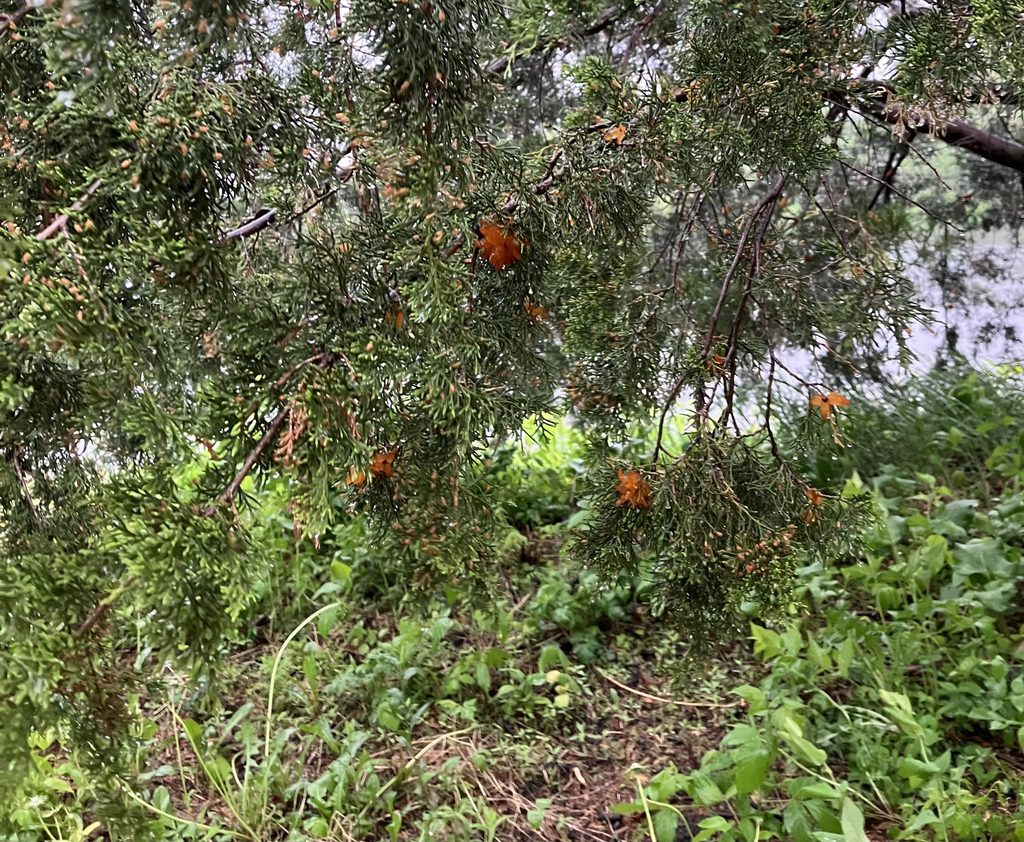
Deciduous trees have leafed out in the past couple of weeks, and the campus and Arboretum are a wonderful array of greens. At this colorful time of year, coniferous trees might be overlooked, but they constitute a significant portion of the trees on campus. Some common ones are white pine, red pine, jack pine, white spruce, and red cedar. What does the spring look like for these trees?
Pine (Pinus) and spruce (Picea) have a period of prominent spring growth. As the temperature begins to increase, the terminal bud at the end of each branch grows an upright “candle” (see https://shorturl.at/RO8en). They are shoots that will bear the tree’s new needles later in the spring. The new needles are often a light green. For a few weeks after leafing out, the needles remain noticeably soft. They are far less pointy and rigid than mature needles.
The spring looks quite different for red cedars (Juniperus virginiana). This species grows more gradually and has no exciting candling phase. However, in the late spring and early summer, red cedars host cedar-apple rust. This is a fungus that causes cedars to grow bright orange gelatinous galls with distinct tendrils (see https://shorturl.at/Pr90w). The fungus requires two separate hosts to complete its life cycle: cedars and flowering plants (angiosperms). The galls that grow on cedars in the spring produce spores that are distributed in the wind. These spores infect various angiosperms, often apple trees (hence the name cedar-apple rust). By midsummer, spores are produced from the angiosperm hosts and blown back to cedar trees in the wind, completing the cycle. The galls form on cedars and overwinter, though they remain brown and inconspicuous until the spring. Overall, cedar-apple rust is not a great concern. While it can cause minor branch die-back, most trees survive.
Spring is not only an exciting season for the showy deciduous trees! Keep an eye out for the new growth of pines and spruce, as well as the fascinating cedar rust fungus.
- Dexter Pakula ’26, for the Cole Student Naturalists
Add a comment